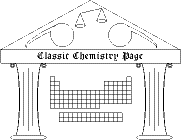Rutherford and Blackett artificial transmutation
Ernest Rutherford was one of the pioneers of the study of radioactivity and nuclei. When he exposed nitrogen atoms to very energetic alpha particles, he detected hydrogen atoms. He inferred (incorrectly) that nitrogen nuclei were fragmented by the alpha particles and that the detected hydrogen nuclei were the result of such collisions. Using modern notation for isotopes (AX, where A is the mass number and X the element symbol) complete the following equations that describe two possibilities for Rutherford's nuclear reaction. (Recall that an alpha particle is the same as a 4He nucleus.) How many protons and how many neutrons were in each product nucleus?
a) The discussion section of Rutherford's paper suggests the following reaction, in which the alpha particle causes the fragmentation of the nitrogen nucleus, but is not itself changed in the process:
14N + 4He -- > __ + 1H + 4He .
b) What really seems to have happened, however, as demonstrated by P. M. S. Blackett in 1925, is that the alpha particle and nitrogen nucleus stuck together, with a proton fragment flying loose.
14N + 4He -- > __ + 1H .
Reference
- Ernest Rutherford, "Collisions of alpha Particles with Light Atoms. IV. An Anomalous Effect in Nitrogen," The London, Edinburgh and Dublin Philosophical Magazine and Journal of Science, 6th series, 37, 581ff (1919).
- Patrick Maynard Stuart Blackett, "The ejection of protons from nitrogen nuclei, photographed by the Wilson method," Proceedings of the Royal Society London A, 1925, 349-360.
Copyright 2003, rev. 2019, by Carmen Giunta. Permission is granted to reproduce for non-commercial educational purposes.

| Back to the top of the Classic Chemistry site |